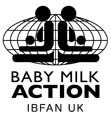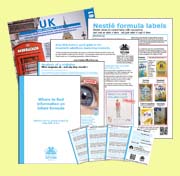Comment by Prof Jack Winkler on HIPP ALA Claim application
Comment on ALA sent to the European Commission by Prof Jack Winkler
Scientific Opinion on the substantiation of a health claim related to alpha-linolenic acid and contribution to brain and nerve tissue development pursuant to Article 14 of Regulation (EC) No 1924/20061 On request from the Competent Authority of Germany, following an application by HiPP GmbH & Co Vertrieb KG, Question No EFSA-Q-2009-00197, adopted on 25 March 2011 and published on the 8th April.
I write to urge you to reconsider this claim recently approved by EFSA. And further, to reconsider four recent statements by EFSA on ALA. All are unjustified by the underlying science. Let me start with the Hipp claim. It is objectionable for three reasons.
1. Yes, ALA is an essential fatty acid — that is, humans cannot make it themselves and so must obtain it from their diet. But the amounts required by an infant are small. And it is almost unthinkable that they would not be obtained from a normal diet. In sum, ALA is not needed as a forticant in formulae.
2. The claim that ALA supports brain development is trivial and applies to all nutrients. It no more valid than saying that sodium, or chloride, or water, or protein supports brain development. They support development of everything. In sum, the claim misleads because it conveys an exaggerated impression of the significance of ALA.
3. The key issue is conversion. The Hipp decision says that ALA is the parent fatty acid of DHA. This is true in a chemical textbook sense. The problem is that humans convert ALA into DHA very poorly. ISSFAL (the International Society for the Study of Fatty Acids and Lipids) recently published a position paper on this issue. I attach a copy. It says that, at best, humans convert only 5% of ALA into DHA. Some other lipid specialists think that is much too high and that the real rate is 0.2%. Whatever the precise figure, it is low. So, very little of any ALA added to any food, including a formula, converts into DHA. In sum, adding ALA to formula is useless.
Putting these arguments together, ALA is unnecessary and ineffective for the purposes claimed. Therefore, the claim is misleading. The approval should be revoked.
But embedded in the decision on the Hipp claim is the broader issue of EFSA assessment of ALA more generally. These views have been stated in four recent publications by EFSA
-- The Labelling Reference Paper 2009
-- The Kraft decision 2009
-- The DRVs for fats 2010
-- The Hipp decision 2011
For convenience, I have extracted the key passages and brought them together on a single sheet of paper, which is attached. I have highlighted the important components. Reading these four passages in sequence, EFSA’s understanding of ALA becomes clear. In essence, EFSA states, without qualification, that humans convert ALA into DHA. But it admits that it has no data on the rate of conversion.
In fact, the ISSFAL position paper provides data. It makes clear that the conversion rate is very low.
The reasons for EFSA’s error are perhaps clear from the composition of the various panels that drafted these papers. No members of any of them are internationally recognised experts on omega-3 fatty acids.
Therefore, I urge you to request that EFSA review the ALA components of all four of these papers. And that in doing so, it seeks evidence and assessments from internationally recognised experts in the field. And then, if the review warrants, EFSA should revise relevant sections of all these four documents.
Prof J T Winkler Nutrition Policy Unit
| Attachment | Size |
|---|---|
| Brenna 2008 ISSFAL statement ALA supplementaiton and conversion to LC PUFAS in humans.pdf | 186.66 KB |
| EFSA on ALA.doc | 41 KB |
- Login to post comments






